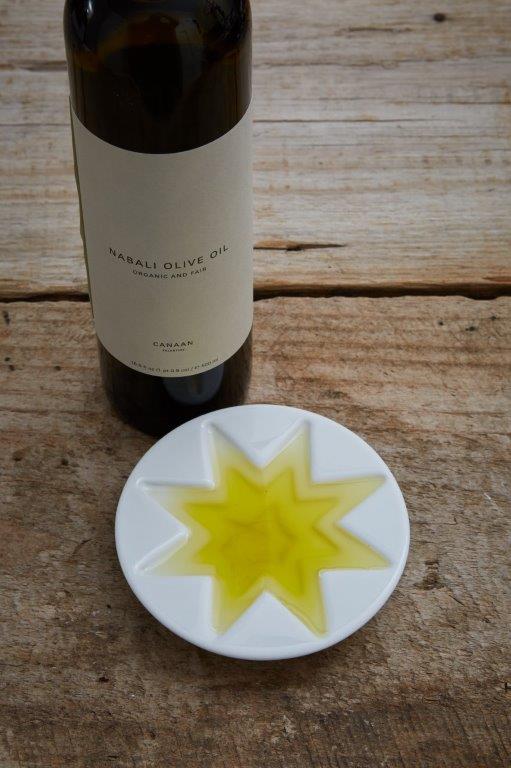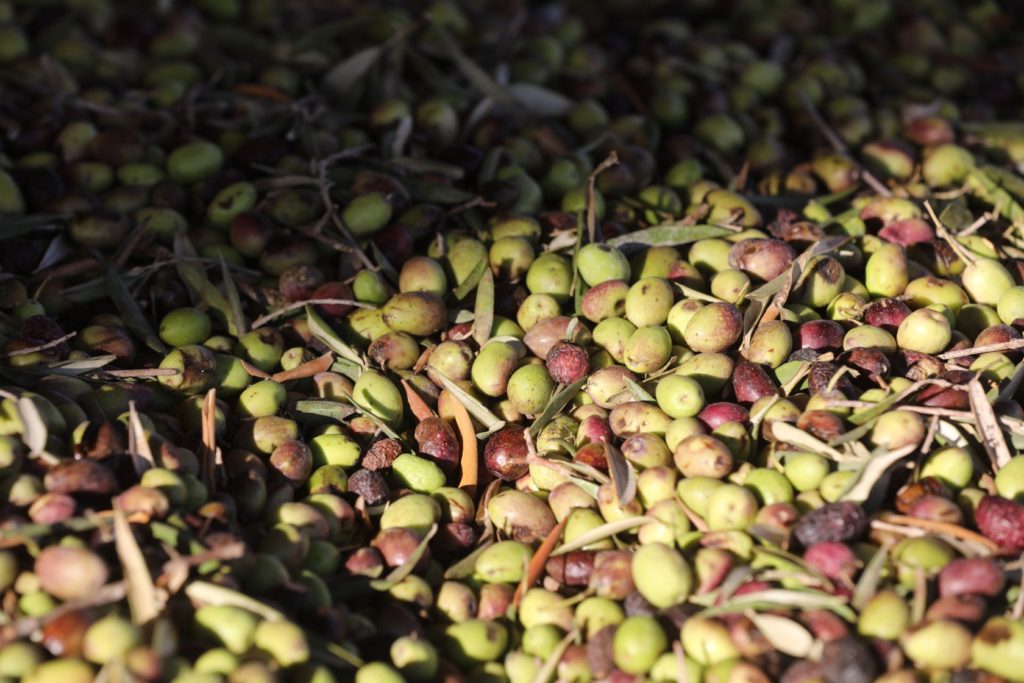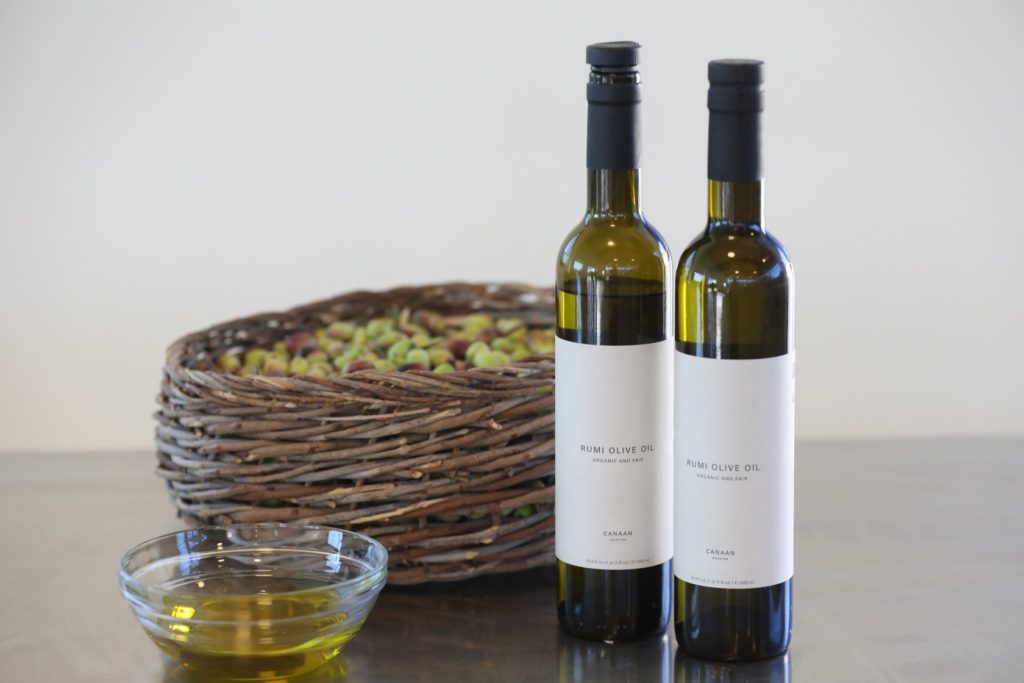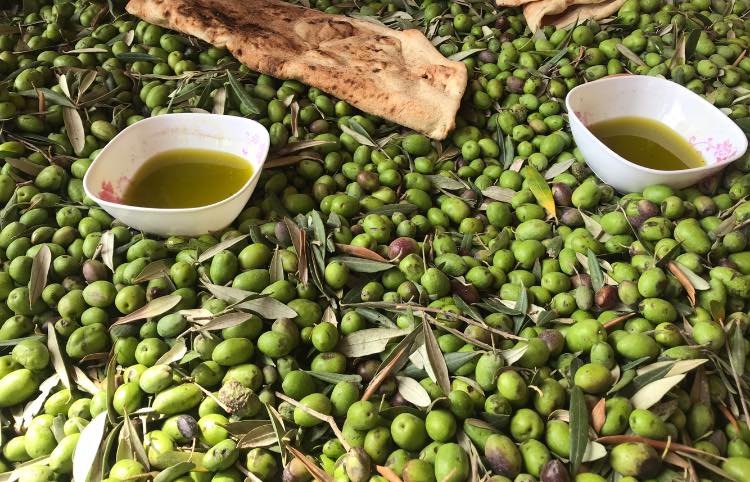
From 6000BCE, ancient peoples grew the olive tree along the shores of the Mediterranean. Historians over the ages have sung the praises of olive oil. Consider its many uses- as a fuel, for skincare, medicinal and as a condiment. The olive tree is an evergreen, its leaves a light silvery green. The fruit has a fleshy pulp and its colour ranges from green, black to mustard yellow. Due to its deep roots, it can withstand extreme temperatures, frost, and drought. It is well known for its longevity.

In my upcoming cookbook Fair Trade Ingredients (spring 2021, Whitecap), I will be showcasing Palestinian olive oils from the Canaan Fair Trade Company, located in Burqin, Jenin, Palestine. They work with 52 olive oil producing cooperatives and over 1400 farming families across the West Bank. With an excellent flavour and aroma, and a maximum acidity of 1%, the extra virgin olive oils are appropriate for salads, raw vegetables, baking, and hot and cold dishes.
The role of olive oil in cooking is simple yet complex. It establishes the flavours of each ingredient, enhancing it and bringing out its essential taste while adding a unique quality of its own. That is why it is important to be familiar with the taste of the olive oil you use for cooking, whether it is a simple dressing or a substitute for butter in baking.

Guide to Tasting Olive Oils
Olive oils are often compared in blind tastings, in a process unlike that used to evaluate wine. First, pour a few tablespoons of oil into a glass. Then, spend a few moments warming the glass in your hands to release the volatile scents of the oil.

COLOUR
The 2 most important factors influencing the colour of the finished oil are the variety of the olive and its maturity at the time of harvest. Early picked olives tend to yield darker, greener oil, while riper olives produce oil that is lighter and more golden in colour.
AROMA
Some words used to describe olive oil flavours are: fruity, fresh, flowery, peppery, nutty, zesty, sweet, delicate, mellow, assertive, rich and subtle.
FLAVOUR
Many parts of the tongue and mouth are involved in tasting. Roll the olive oil around in your mouth to determine the texture and its effect on the tip of your tongue, roof of your mouth, center of tongue and back of tongue.
When participating in an olive oil tasting one swallows slowly to determine the finish as it is detected in your throat.
I was invited to participate in a Spanish olive oil tasting tour for culinary professionals in Spain by the International Olive Oil Council. What a fabulous experience. In order to cleanse our palette, we were given slices of green apple between tastings. We visited olive orchards, participated in daily tastings, and even cooked ourselves dinner one night with several award-winning oils.
More Fair Trade ingredients will be featured in my upcoming cookbook Fair Trade Ingredients, publication date Spring 2021, Whitecap Books



